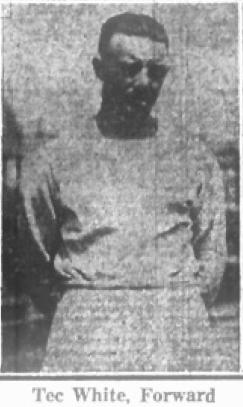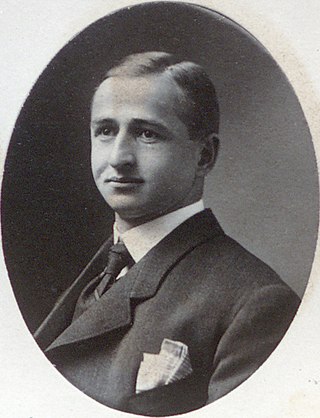Fall River F.C. was an American soccer club based in Fall River, Massachusetts. During the 1920s and early 1930s they were one of the most successful soccer clubs in the United States, winning the American Soccer League on six occasions. They also won the National Challenge Cup four times. In 1924 they won the first ASL / Challenge Cup double and were subsequently the American soccer champions three times in succession. Between 1928 and 1930 they won a further three titles in a row. In 1930 they completed a treble, winning the ASL title, the Challenge Cup and the Lewis Cup. The same year they also toured Central Europe.
The American Football Association (AFA) was the first attempt in the United States to form an organizing soccer body.
Clark Our New Thread, mostly known as Clark O.N.T. was a U.S. soccer team sponsored by the Clark Thread Company. The team competed in the annual American Cup, winning the first three championships. Beside Fall River Rovers, they are considered the most successful clubs in the late 1880s in American soccer.
Mark's Stadium is a former soccer stadium located in North Tiverton, Rhode Island. During the 1920s and early 1930s it was the home of Fall River F.C., one of the era’s most successful soccer teams. It is one of the earliest examples of a soccer-specific stadium in the United States. After the demise of the 'Marksmen', the stadium was used as a home ground by other local teams, most notably Fall River F.C. (1932) and Ponta Delgada S.C.
Samuel Mark was an American soccer club owner. During the 1920s and early 1930s he was the owner of Fall River FC, often referred to as the Fall River Marksmen, one of the era's most successful teams. Mark's continued to own the team after it relocated and became the New York Yankees and then New Bedford Whalers. He also briefly owned Boston Soccer Club. He had played guard for the Massachusetts American Legion basketball team.

James White was a Scottish footballer who spent most of his career playing for Fall River in the American Soccer League. He was born in Airdrie, North Lanarkshire, Scotland.
The 1909 American Cup was the 18th edition of the American Cup an annual soccer tournament held by the American Football Association.
Frederick "Chiddy" Pepper was an English footballer who played as an inside forward. Born in Netherfield, Nottinghamshire, Pepper received a basic education before finding vocation as a fireman on the local railway. Joining Notts County F.C. in 1908 aged 21, he found little success playing in the English Football League and subsequently emigrated to Canada in 1913. Settling in Hamilton, Ontario, Pepper was scouted by industrialist Charles M. Schwab from local team Hamilton Lancashire and joined his Bethlehem Steel F.C. in 1914, an important club in the infancy of organized association football in the United States.
Patrick Butler was an early twentieth-century Irish soccer player who appears to have spent his entire career in the U.S. leagues. He was a member of the Bethlehem Steel teams which won the 1916 National Challenge Cup and the 1917 and 1919 American Cup Butler began his career on the front line, playing both inside and outside forward on both sides of the field. He ended his career at the right half back position.
The 1908 American Cup was the annual soccer tournament held by the American Football Association. The West Hudsons won the tournament for the second time in three years defeating the Paterson True Blues in the final as they did in 1906.
The 1888 American Cup was the fourth edition of the soccer tournament organized by the American Football Association. Having expanded into the New England district the first new champions came from Fall River, Massachusetts after Clark O.N.T. of Newark had won the previous three editions. The Fall River Rovers defeated the Newark Almas in the final.
The 1889 American Cup was the fifth edition of the soccer tournament organized by the American Football Association. The Fall River Rovers won their second consecutive title by defeating the Newark Caledonians in the final.
The 1890 American Cup was the sixth edition of the soccer tournament organized by the American Football Association (AFA). The Fall River Olympics won their first title becoming the second Fall River team to do so after the Rovers had won the previous two editions.
The 1891 American Cup was the seventh edition of the soccer tournament organized by the American Football Association. The Fall River East Ends won their first title, keeping the title in Fall River for the fourth year running. Fall River Olympic won the title in 1890 and Fall River Rovers won in 1888 and 1889. The Fall River Rovers were readmitted to the AFA after having settled their dispute with the Pawtucket Free Wanderers, before which any associations teams were barred from playing them.

Alexander William Bannwart, also known as Al Winn, was a Swiss-American businessman. He was involved in baseball, politics, and real estate.
The 1892 American Cup was the eighth edition of the soccer tournament organized by the American Football Association. The Fall River East Ends won their second title in succession by overcoming the New York Thistles in the final. The Challenge Cup committee elected by the AFA were Robert Miller of O.N.T. as president, James Henderson of Brooklyn Nonpareil as vice president, Thomas B. Hood of Pawtucket as Secretary, and John Lang of Fall River as Treasurer.
The 1893 American Cup was the ninth edition of the soccer tournament organized by the American Football Association. The Pawtucket Free Wanderers won their first title by overcoming the New York Thistles in the final. This season operations shifted to New England with the elected committee represented by John Clark of Pawtucket as president, Joseph Brady of the East Ends as vice president, John F. Geagan of the Rovers as Secretary, and Ephraim Mayes of the Olympics as Treasurer.
The 1895 American Cup was the eleventh edition of the soccer tournament organized by the American Football Association. The Newark Caledonians brought the trophy back to New Jersey for the first time since 1887 by winning 4–0 against the Pawtucket Free Wanderers in the final. This season the elected committee was Samuel Worthington as president, Thomas Burke as vice president, William Robertson as Secretary, and Alexander Micklejohn as Treasurer. The committee chose the Thomlinson football to be the official ball for use in all cup games. This was the first occasion a steam ship team was admitted to the competition. Players from the Teutonic of the White Star line were placed in the western division. The American League of Professional Football (ALPF) began play this season just two weeks prior to the American Cup's opening round. However, in order to protect itself, the AFA barred players from joining the association who had already signed contracts with the ALPF. The National Association Football League (NAFBL) also began its first season in March. The only AFA club to participate in the NAFBL, the Centrevilles of Bayonne were the first champions.
The 1896 American Cup was the twelfth edition of the soccer tournament organized by the American Football Association. The 1894 Runners Up, Paterson True Blues, won the tournament after defeating the two-time champions Fall River Olympics in the final. This season the elected committee was James C. Potter of Pawtucket as president, James Turner of Paterson as vice president, William Robertson of Newark as Secretary, and Andrew Meiklejohn of Pawtucket as Treasurer.
The 1906 American Cup was the fifteenth edition of the soccer tournament organized by the American Football Association. After being inactive for several years, the AFA reorganized in February 1906 with eight initial entries from the New Jersey towns of Harrison, Paterson, Kearny, and Newark. At their February 13 meeting at the Caledonian House in Paterson it was decided to send additional invitations to Metropolitan league teams. On February 17 at the Cosmopolitan Park House in East Newark Hal A. Holden of Kearny was elected president, Harry Craig of Paterson as treasurer, Peter Martin(Bronx Rangers) as vice-president, Herbert Turner of Paterson as recording secretary, James Allen Jr. of O.N.T. as financial secretary and Dr. John W. Reid as honorary president. On February 24, exhibition games between the West Hudsons of Harrison and Pan Americans of Fall River coincided with the association meeting at Cosmopolitan Hall in order to have a representative, in this case C.C. Murphy, present for New England clubs wishing to join the tournament. On this occasion four additional teams from the Metropolitan district joined bringing the total to twelve. Entries were open until March 3. John Swithenby who was in possession of the old trophy donated it to the association to once again award it to the winner of the tournament.


